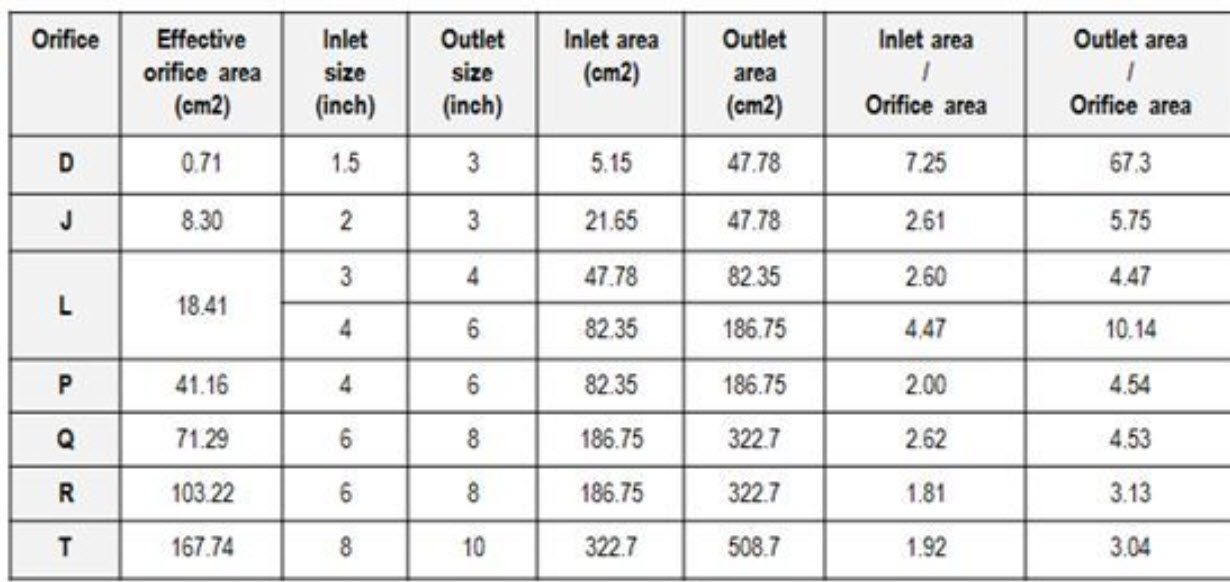Written by @don1980:
Why do we inherently have difficulty meeting the pressure drop limits when using some particular PSVs and not others?
This is an unintended consequence which stemmed from the original creation of API 526 (API orifice sizes, and the PSV bodies into which these orifices are installed). As the orifice sizes increase, the bodies sizes (and their connection sizes) don’t increase proportionately. The result is that some orifices (particularly the larger ones) are too big for the PSV body/connections. That is, some orifices allow a flow rate that inherently causes too much pressure drop for the PSV’s inlet and outlet size.
Review the table below. Specifically, look at the ratios for inlet-area/orifice-area and outlet-area/orifice-area. This explains why you almost never have pressure drop problems with 1D2 PSVs, and why you almost always have pressure drop problems with larger PSVs like 4P6 and 8T10. When up-sizing the inlet and/or outlet piping isn’t enough to solve a pressure drop problem, the most cost-effective solution is to restrict the lift of the PSV. Effectively, this allows you to reduce the rated capacity (the flow rate used to calculate the pressure losses) for the PSV. Since pressure drop increases proportionately to the square of the flowrate, it doesn’t take much of a flow reduction to make a big impact on the pressure drop. Obviously, the reduced flow rate must be high enough to satisfy the required flow. Contact your PSV supplier when implementing this option. Based on your required flow rate, they will determine the necessary lift reduction, and they will supply the necessary part which is installed by a professional valve shop. The vendor will also provide the new rated capacity for this restricted-lift PSV.
